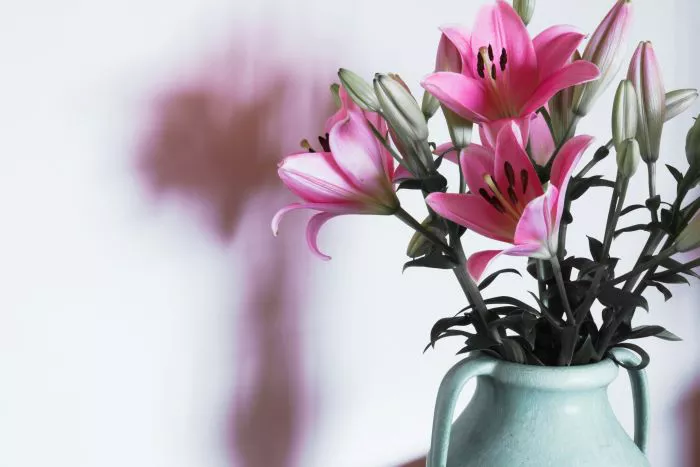Fresh flowers brighten up any space, adding beauty and fragrance. However, keeping cut flowers fresh can be challenging. Understanding how to maintain their vitality is essential for enjoying their beauty for as long as possible. This article will explore various methods and products to keep cut flowers fresh, including water management, floral preservatives, and natural alternatives.
Water Management for Fresh Flowers
Water is the most critical factor in keeping cut flowers fresh. Proper hydration is vital for the health of the flowers. Here are some key practices for managing water effectively.
First, always start with clean water. Bacteria can quickly build up in water, leading to premature wilting. Use a clean vase and fresh, cool water. It is recommended to change the water every two to three days to prevent bacterial growth.
Second, cut the stems at an angle before placing them in water. This technique increases the surface area for water absorption. Use sharp scissors or a knife to make a clean cut. If the stems are crushed or damaged, they may struggle to take up water effectively.
Third, remove any leaves that will sit below the water line in the vase. Leaves submerged in water can rot, contributing to bacterial growth and clouding the water.
Finally, consider the temperature of the water. While most flowers prefer room temperature water, some, like roses and tulips, benefit from cooler water. Experimenting with water temperature can help you determine what works best for your specific flowers.
Floral Preservatives
Floral preservatives are specially formulated solutions that provide essential nutrients to cut flowers. These products typically contain sugar, acidifiers, and biocides. Using a floral preservative can significantly extend the life of your flowers.
Sugar in floral preservatives serves as food for the flowers, providing energy for continued growth. Acidifiers help lower the pH of the water, making it easier for flowers to absorb water. Biocides inhibit the growth of bacteria and fungi, keeping the water clean.
To use floral preservatives, follow the instructions on the packaging. Typically, you will dissolve the preservative in water before adding it to the vase. Make sure to use the correct ratio of water to preservative for optimal results.
If you do not have access to commercial floral preservatives, you can make a simple homemade version. Mix one part lemon-lime soda with three parts water. The sugar in the soda acts as a food source, while the acidity helps with water absorption.
Natural Alternatives for Keeping Flowers Fresh
In addition to commercial floral preservatives, several natural alternatives can help keep flowers fresh. These options are often readily available at home and can be effective in extending the life of your blooms.
One popular natural method is the use of vinegar. Adding two tablespoons of white vinegar and one tablespoon of sugar to a quart of water can create a homemade flower preservative. The vinegar helps inhibit bacterial growth, while the sugar provides nourishment.
Another option is using aspirin. Dissolving one aspirin tablet in the water can help keep flowers fresh. Aspirin contains salicylic acid, which can help improve water uptake and delay wilting.
Another effective natural remedy is using a few drops of bleach. Adding one-quarter teaspoon of bleach to a quart of water can help keep the water clear and free of bacteria. However, be cautious with this method, as too much bleach can harm the flowers.
Finally, consider using a few drops of lemon juice in the water. The acidity of lemon juice can help maintain the pH balance, making it easier for flowers to absorb water.
Environmental Factors for Flower Longevity
In addition to water management and preservatives, environmental factors play a significant role in the longevity of cut flowers. Proper placement and temperature can make a big difference.
First, keep your flowers in a cool location. Avoid placing them in direct sunlight or near heat sources, such as radiators or appliances. High temperatures can cause flowers to wilt quickly.
Second, humidity levels can also impact flower freshness. Flowers generally thrive in higher humidity. If possible, place a humidifier near your flowers or mist them lightly with water to maintain moisture levels.
Third, avoid placing cut flowers near ripening fruits. Fruits release ethylene gas, which can accelerate the aging process of flowers. Keeping flowers away from fruits will help them last longer.
Conclusion
In conclusion, keeping cut flowers fresh requires attention to water management, the use of floral preservatives, and consideration of environmental factors. Starting with clean water and properly preparing the stems are essential steps. Floral preservatives can provide vital nutrients and inhibit bacterial growth, while natural alternatives such as vinegar and aspirin can also be effective.
By understanding these methods and implementing them, you can enjoy the beauty of fresh flowers for an extended period. Whether for a special occasion or everyday enjoyment, taking the time to care for your cut flowers will enhance their beauty and longevity. With the right practices, your flowers can remain vibrant and fresh, bringing joy to your home for days to come.


